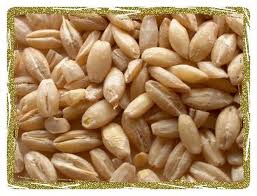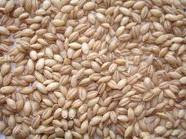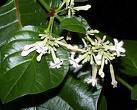ANNATTO, ACHIOTE, THE LIPSTICK TREE BIXA ORELLANA
The Lipstick tree which bears the fruit from which we get annatto is native to the Caribbean and Latin America. The tree grows to heights of around 9 metres, with rose- pink and sometimes white flowers. Now it is cultivated for its seeds from which we get the food colouring. . It was found in Latin America by the Spanish explorers in the 16th century and named Orellana after one of them, Francisco de Orellanna. Bixa comes from the Carib name for the tree, bya or biche. There are only two known trees in the Bixa genus and both of them are native to South America. The pod containing the seeds looks a little like a red beech mast, and the seeds inside are small triangles 3-5 mm in size.
 Like gum Tragacanth (gond katira) annatto has its own E number, E610b as it is used as a food colouring. It is used in margarine and cheeses such as Red Leicester and Cheshire, and to colour smoked herring (kippers) and cod. .
Like gum Tragacanth (gond katira) annatto has its own E number, E610b as it is used as a food colouring. It is used in margarine and cheeses such as Red Leicester and Cheshire, and to colour smoked herring (kippers) and cod. . It is now cultivated in India, and Kenya as well as in the countries of its origin. In some of the Pacific islands, it is an introduced species which has become an invasive one, and it is classed as invasive in Hawaii too. It is cultivated in the Philippines where the seeds are ground and used as a condiment. It is from the seeds that a red food colouring comes, and this is easy to obtain by steeping the seeds in water. The resulting red liquid can be used to colour rice, and is known, as is turmeric (haldi), as “poor man’s saffron.”
 It is used in the cosmetics industry as well as the food industry and has traditionally been used as lipstick, rouge and to make the sandour mark on Hindu women’s foreheads in India.
It is used in the cosmetics industry as well as the food industry and has traditionally been used as lipstick, rouge and to make the sandour mark on Hindu women’s foreheads in India. The pulp from the fruit which covers the seeds has been used as an insect repellant and when rubbed on the skin it is said to get rid of pimples and other eruptions. The leaves pulp and seeds have been used in traditional medicine for centuries to cure a number of ailments. A decoction of the leaves can be made with 8-10 leaves to a litre of water. Boil together for 10 minutes then leaves to cool and drink half a cup three times a day for liver problems. If applied to the skin the decoction can soothe burns and promote wound healing. The decoction is a diuretic and can also calm minor stomach upsets, as well as aiding digestion. In Brazil the decoction is used for heartburn, and prostate problems as well as a vaginal antiseptic.
In tribal medicine it has been used as an aphrodisiac and as a mild laxative, not as strong as senna or jamalgota or the castor bean’s action.
Annatto can reduce inflammation and protects the liver it is believed after clinical trials. It can also kill bacteria in the lab, and research is underway to ascertain if it can be beneficial to our health. It seems also to raise blood sugar levels but lower blood pressure.
 The seeds are said to be expectorants so they can clear phlegm and mucous and the roots of the tree have been used as a digestive aid and cough suppressant.
The seeds are said to be expectorants so they can clear phlegm and mucous and the roots of the tree have been used as a digestive aid and cough suppressant. Annatto contains vitamins C and E as well as some B-complex vitamins, amino acids, minerals such as calcium, iron and phosphorous and bet-carotene. Annatto seeds also contain tocotrienols which are potent antioxidants with cholesterol lowering abilities, and which also have a neuro-protective action. These also have anti-inflammatory actions, so many of the traditional uses have their basis on a solid foundation according to medical scientists.
 The rainforests of the Amazon Basin and the South American continent have yielded amazing medicinal species, such as the quinine or fever tree, although sadly we may have lost some of these plants due to the wanton destruction of the rainforests that has gone on in the past.
The rainforests of the Amazon Basin and the South American continent have yielded amazing medicinal species, such as the quinine or fever tree, although sadly we may have lost some of these plants due to the wanton destruction of the rainforests that has gone on in the past.













































